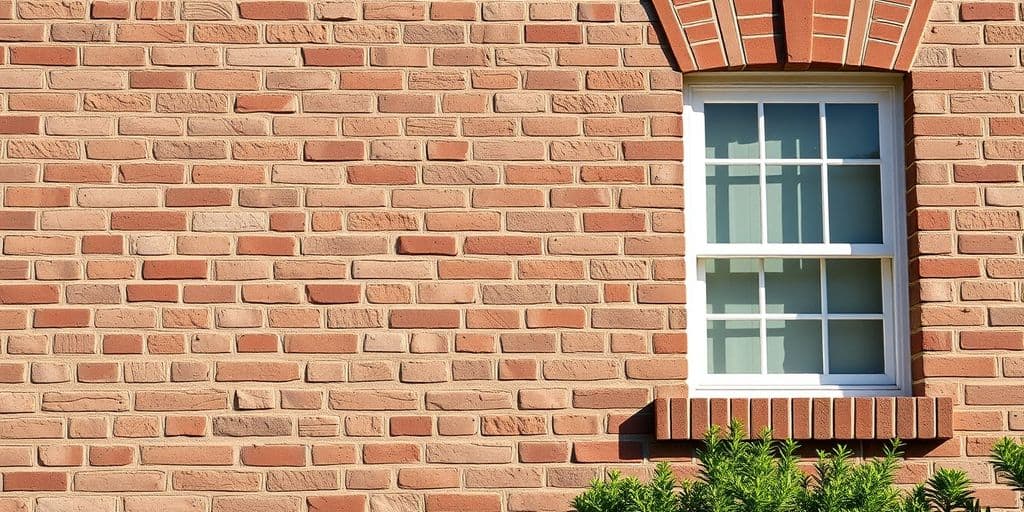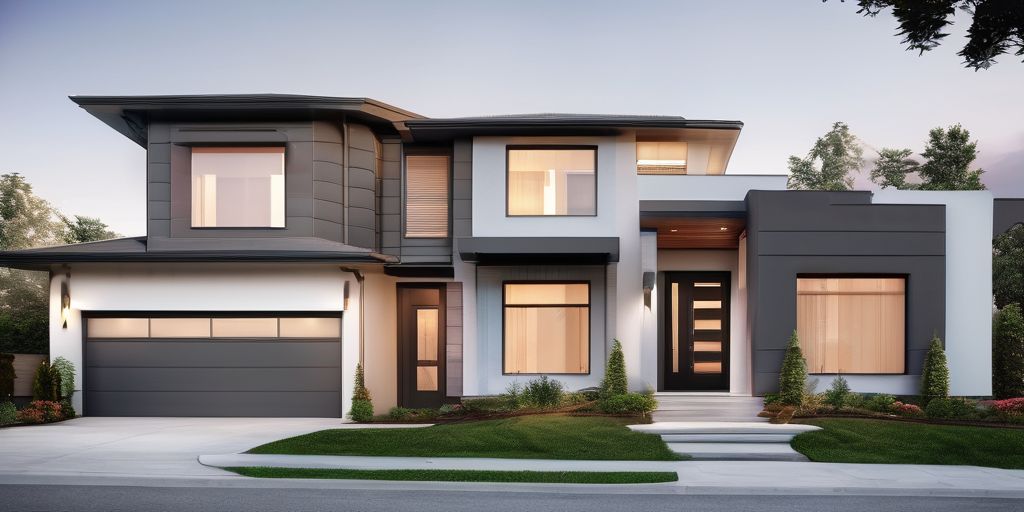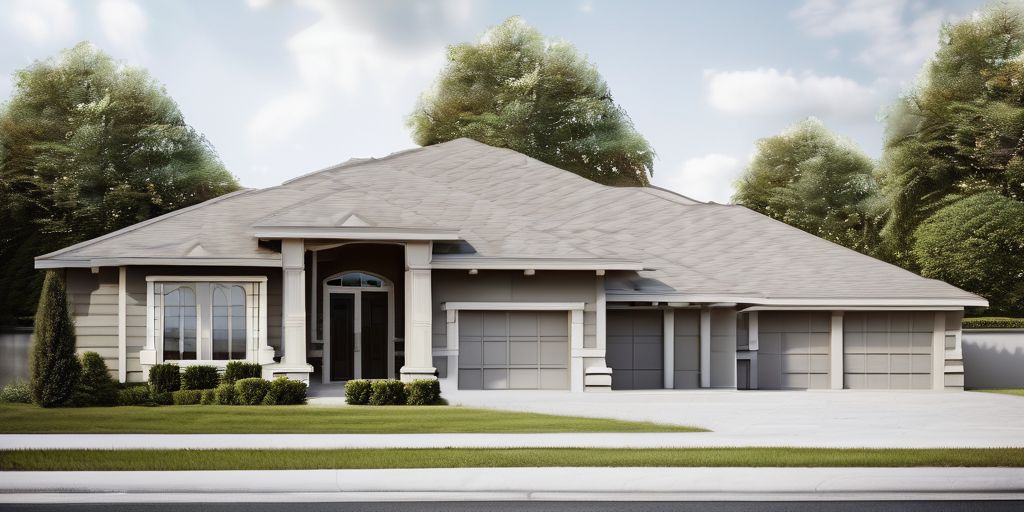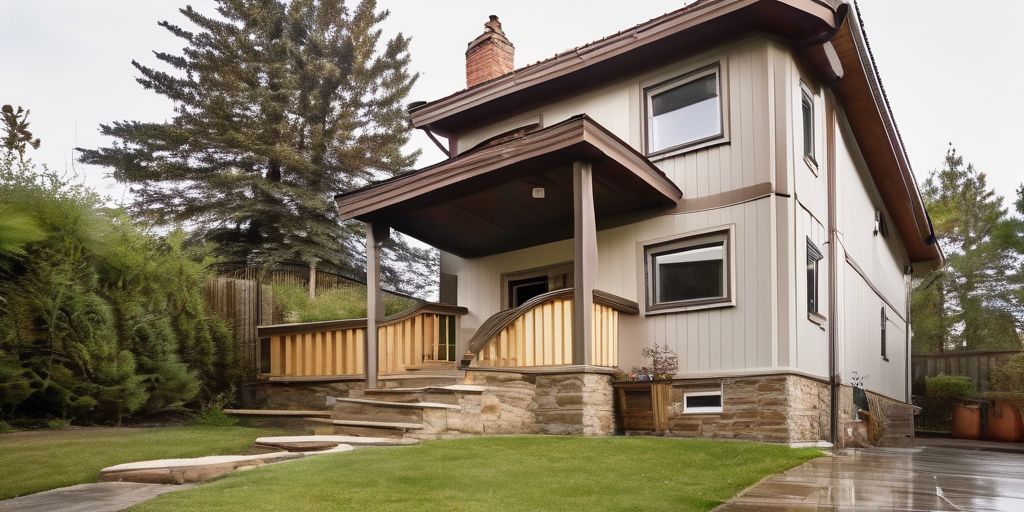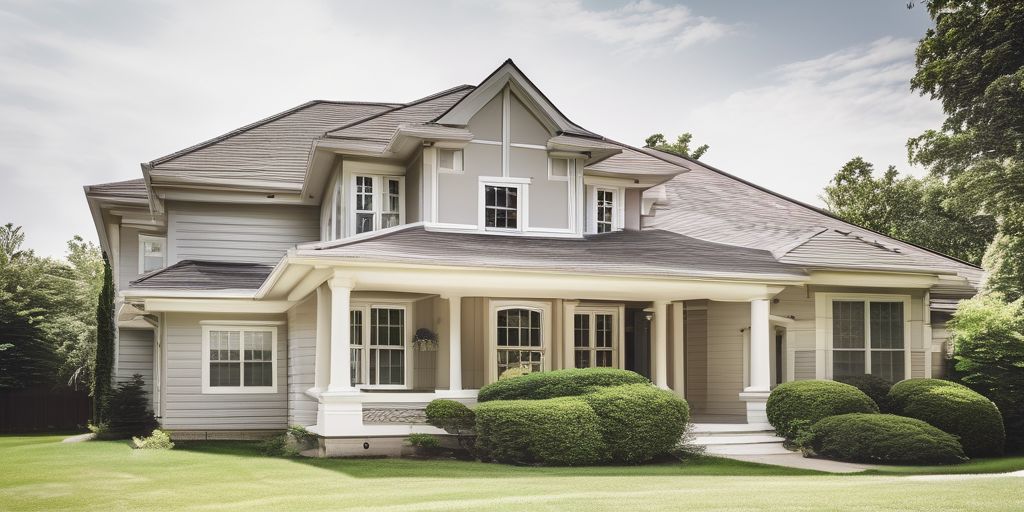Painting brick homes in Burlington can be quite an adventure. The city’s unique brick surfaces and changing weather make it important to choose the right techniques and materials. In this article, we’ll guide you through the process, from picking the best paint to maintaining your freshly painted bricks.
Key Takeaways
- Understand the different types of bricks and their conditions before starting your painting project.
- Choose paints that are durable and suitable for Burlington’s climate.
- Properly clean and repair your brick surfaces to ensure the paint adheres well.
- Use the right tools and follow safety precautions while painting.
- Regular maintenance will help keep your painted bricks looking fresh for years.
Understanding Burlington’s Unique Brick Surfaces
Identifying Common Brick Types
Burlington’s homes feature a variety of brick types, each with its own characteristics. Common types include:
- Clay Bricks: Known for their durability and classic appearance.
- Concrete Bricks: Often used for their strength and versatility.
- Sand Lime Bricks: Recognized for their smooth finish and uniform shape.
Assessing Surface Conditions
Before painting, it’s crucial to assess the condition of the brick surface. Look for:
- Cracks and chips that need repair.
- Efflorescence, a white powdery substance that indicates moisture issues.
- Mold or mildew, which must be cleaned off.
Impact of Local Climate on Brick
Burlington’s climate can significantly affect brick surfaces. The local weather includes:
- Temperature Fluctuations: These can cause bricks to expand and contract, leading to cracks.
- High Humidity: This can promote mold growth and efflorescence.
- Winter Freeze-Thaw Cycles: These can damage the brick and mortar.
Understanding the unique needs of different brick types and their conditions is essential for a successful painting project in Burlington. The Royal Botanical Gardens, a local landmark, showcases various brick structures that have stood the test of time, highlighting the importance of proper maintenance.
By recognizing these factors, homeowners can better prepare their brick surfaces for painting, ensuring a long-lasting and beautiful finish.
Choosing the Right Paint for Burlington’s Brick Homes
Best Paint Types for Durability
When selecting paint for your brick home, it’s crucial to consider durability. Exterior painters often recommend paints that can withstand Burlington’s varying weather conditions. Here are some top choices:
- Acrylic Latex Paint: Known for its flexibility and resistance to cracking, it’s a popular choice for brick surfaces.
- Elastomeric Paint: Offers excellent waterproofing and can bridge small cracks, making it ideal for older brick homes.
- Mineral-Based Paint: This eco-friendly option allows the brick to breathe, preventing moisture buildup.
Color Selection Tips
Choosing the right color can significantly impact your home’s curb appeal. Here are some tips to guide you:
- Consider the Surroundings: Look at the natural landscape and nearby homes. Neutral colors often blend well, but don’t be afraid to go bold if it suits your style.
- Test Samples: Paint small sections of your brick to see how the color looks at different times of the day.
- Historical Context: Burlington has a rich architectural history. Incorporating traditional colors can add a touch of elegance to your home.
Importance of Quality Primers
Using a high-quality primer is essential for a long-lasting paint job. Primers help the paint adhere better to the brick surface and provide an even base. Here are some benefits:
- Enhanced Adhesion: Primers create a smooth surface for the paint to stick to, reducing the chances of peeling.
- Sealing Pores: Brick is porous, and a good primer will seal these pores, preventing moisture from getting trapped.
- Improved Durability: A quality primer can extend the life of your paint job, saving you time and money in the long run.
Remember, picking the right paint and planning your project well can help you achieve a stunning and long-lasting finish.
By considering these factors, you can ensure that your brick home in Burlington not only looks beautiful but also stands the test of time.
Preparing Your Brick for Painting
Cleaning and Repairing Brickwork
Before painting brick, always clean it thoroughly so that the applied paint adheres. Start by inspecting your brickwork for any signs of damage, such as cracks or chips. Use a mixture of water and mild detergent to gently clean the bricks, avoiding harsh chemicals that can harm the surface. If you notice any moss or mildew, address it promptly to prevent long-term damage. Repair any damaged mortar joints to stop water from getting in and causing structural issues.
Essential Tools and Materials
Having the right tools and materials is crucial for a successful brick painting project. Here’s a list of essentials:
- Power washer or garden hose
- Mild detergent
- Scrub brush
- Trowel for mortar repair
- Drop cloths
- Painter’s tape
- Quality primer
- Paint rollers and brushes
- Safety goggles and gloves
Safety Precautions to Consider
Safety should always come first when preparing to paint brick surfaces. Wear safety goggles and gloves to protect yourself from debris and cleaning agents. If you’re using a power washer, be cautious of the high pressure, which can damage the brick if not used correctly. Ensure you have a stable ladder if you need to reach higher areas. Proper preparation and timing are key to achieving a durable and aesthetically pleasing paint job that can withstand Burlington’s variable weather.
Remember, regular maintenance will make these tasks easier over time. Proactive care can prevent the need for more extensive and costly repairs down the line.
Techniques for Painting Brick Surfaces
Painting brick surfaces can be a rewarding project, but it requires specific techniques to ensure a lasting and attractive finish. Here are some essential methods to consider:
Brush vs. Spray: Pros and Cons
Choosing between a brush and a spray for painting brick surfaces depends on your goals and the specifics of your project. Here are some pros and cons of each method:
- Brush:
- Pros: Better control, ideal for detailed work, preserves brick texture
- Cons: Time-consuming, may leave brush marks
- Spray:
- Pros: Faster application, smooth finish, covers large areas quickly
- Cons: Requires more preparation, potential for overspray, less control
Step-by-Step Painting Guide
Follow these steps to achieve a professional-looking paint job on your brick surfaces:
- Clean the brick: Remove dirt, grime, and any loose material. This ensures the paint adheres properly.
- Repair any damage: Fill in cracks and gaps with appropriate filler. This step is crucial for a smooth finish.
- Apply primer: Use a high-quality primer designed for masonry. This helps the paint stick better and last longer.
- Choose your paint: Opt for breathable, exterior-grade paint suitable for brick.
- Paint application: Apply the paint using your chosen method (brush or spray). Start with thin layers to avoid drips and runs.
- Drying time: Allow sufficient drying time between coats. This ensures a durable finish.
Common Mistakes to Avoid
Avoid these common pitfalls to ensure a successful brick painting project:
- Skipping the cleaning step: Dirty surfaces prevent proper paint adhesion.
- Ignoring repairs: Unfixed cracks and gaps can lead to peeling paint.
- Using the wrong paint: Non-breathable paint can trap moisture, causing damage.
- Rushing the process: Allowing proper drying time between coats is essential for durability.
Attention to detail during the preparation phase can prevent the need for future costly repairs and ensure the longevity of the painted surfaces.
Maintaining Your Painted Brick
Routine Cleaning Tips
Keeping your painted brick clean is essential for its longevity. Here are some tips:
- Inspect your brickwork annually for signs of damage or wear. Look for cracks, chips, or signs of mortar deterioration.
- Clean your bricks gently with a mixture of water and a mild detergent. Avoid using harsh chemicals that can damage the brick surface.
- Address any moss or mildew growth promptly, as these can cause long-term damage if left untreated.
- Seal your bricks if necessary to protect against moisture and weathering. This is especially important in climates with freeze-thaw cycles.
- Repair any damaged mortar joints to prevent water infiltration and structural issues.
Remember, regular maintenance will make these tasks easier over time. Proactive care can prevent the need for more extensive and costly repairs down the line.
Touch-Up and Repair Advice
While maintenance is essential, it’s also important to recognize when a professional should be consulted for more significant issues. If you’re unsure about the condition of your brickwork or how to proceed with repairs, seeking expert advice can save time and ensure the longevity of your brick accents.
Protective Coatings for Longevity
When considering the longevity of exterior brick painting, the use of protective additives is crucial. These additives enhance the durability of the paint against various elements, ensuring that the aesthetic appeal of your home remains intact over time.
Protective additives serve multiple functions:
- They act as a powerful stain blocker, preventing discoloration from natural wood tannins.
- They provide superior UV protection, which is particularly beneficial for homes in Burlington where sunlight can cause paint to fade.
- They help in creating a flame retardant barrier, an added safety feature for wooden structures.
- As mold inhibitors, these additives keep the brickwork free from spore buildup, a common issue in humid climates.
It’s important to clean the brick surface thoroughly before applying paint mixed with protective additives. This ensures strong adhesion and prevents peeling.
Incorporating Local Trends and Styles
Popular Color Schemes in Burlington
Choosing the right color scheme for your brick home in Burlington can significantly enhance its curb appeal. Some of the most popular exterior colors in the area include:
- Classic Whites and Neutrals: Timeless and versatile, these colors work well with any architectural style.
- Earthy Tones: Browns, beiges, and greens that blend seamlessly with Burlington’s natural surroundings.
- Bold Blues and Grays: These colors add a modern touch while still being sophisticated.
Historical Influences on Modern Designs
The architectural heritage of Burlington has a significant influence on modern brick painting trends. Historical homes and communities prioritize proper surface preparation, ensuring that the chosen paint sheen not only enhances the aesthetic but also adheres to the integrity of the original design. Key considerations include:
- Proper surface preparation
- Color matching to historical standards
- Community involvement in color decisions
- Preservation and maintenance as contemporary trends
The selection of paint sheen in historical Burlington neighborhoods is more than a matter of personal taste; it’s a commitment to preserving the past while accommodating modern living standards.
Showcasing Local Architectural Highlights
Burlington is home to many architectural gems that can serve as inspiration for your brick painting project. When planning your project, consider taking a stroll around the Royal Botanical Gardens for inspiration. The natural beauty and diverse plant life can offer a fresh perspective on color combinations. Here are some tips for showcasing architectural highlights:
- Use a different color for trim and shutters to create contrast.
- Highlight entryways and porches with a bold color to make them stand out.
- Paint architectural details like columns or gables in a complementary shade.
By carefully selecting and applying colors, you can transform your Burlington home into a stunning, eye-catching feature in your neighborhood.
Keeping up with local trends and styles can make your home stand out in the neighborhood. Whether it’s a fresh coat of paint or a complete exterior makeover, our team is here to help. Visit our website to explore how we can transform your home with our expert services.
Conclusion
Painting brick homes in Burlington is more than just a way to freshen up the look of your house. It’s about finding the right balance between beauty and practicality. By considering the local climate, historical architecture, and personal taste, homeowners can make informed decisions that enhance their home’s curb appeal and durability. Whether you prefer a satin finish for its versatility or a flat sheen for a classic look, taking the time to test and choose the right paint can make all the difference. Remember, a well-painted brick home not only looks great but also stands strong against the elements for years to come.
Frequently Asked Questions
What kind of paint is best for Burlington’s brick homes?
The best paint for Burlington’s brick homes is one that is durable and weather-resistant. Look for paints that can handle temperature changes and humidity. It’s also a good idea to use a high-quality primer to ensure the paint sticks well.
How do I prepare my brick for painting?
To prepare your brick for painting, start by cleaning it thoroughly to remove dirt and grime. Repair any cracks or damaged areas. Make sure the brick is completely dry before you begin painting. Using the right tools and safety gear is also important.
Is it better to use a brush or a spray for painting brick?
Both methods have their pros and cons. Brushes are good for detailed work and small areas, while sprays can cover large areas more quickly. Spraying can give a more even finish, but it may require more preparation to protect surrounding areas.
What colors are popular for brick homes in Burlington?
Popular colors for brick homes in Burlington include neutral tones like beige, gray, and white. These colors blend well with the local architecture and natural surroundings. Bold colors can also be used for accents to add a unique touch.
How do I maintain my painted brick?
To keep your painted brick looking good, clean it regularly with mild soap and water. Touch up any chipped or peeling areas as soon as you notice them. Applying a protective coating can also help extend the life of the paint.
Can local trends influence my choice of paint?
Yes, local trends can definitely influence your choice of paint. It’s a good idea to look at popular color schemes and styles in Burlington. Consulting with local painters and designers can also provide valuable insights.

